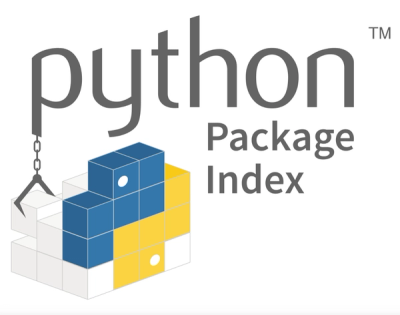

Nested property
Traverse a deeply nested JS data structure to get, set values, or test if values are part of the data structure.
Nested property offers a simple syntax to define a path to access a value with.
For instance:
const data = {
a: {
b: [
10,
20
]
}
};
nestedProperty.get(data, "a.b.1");
The syntax also supports array wildcards to access all items within an array:
const array = [
{ ssn: "123-456-7890", name: "alice" },
{ ssn: "234-567-8901", name: "bob" },
{ ssn: "456-789-0123", name: "charlie" }
]
nestedProperty.set(array, "+.ssn", "<redacted>");
Install
npm install nested-property
Use
Require nested-property:
var nestedProperty = require("nested-property");
nestedProperty.get(data, "path")
You can get a nested property from an object:
var object = {
a: {
b: {
c: {
d: 5
}
}
}
};
nestedProperty.get(object, "a");
nestedProperty.get(object, "a.b.c");
nestedProperty.get(object, "a.b.c.d");
nestedProperty.get(object, "a.d.c");
nestedProperty.get(object);
nestedProperty.get(null);
It also works through arrays:
var array = [{
a: {
b: [0, 1]
}
}];
nestedProperty.get(array, "0");
nestedProperty.get(array, "0.a.b");
nestedProperty.get(array, "0.a.b.0");
nestedProperty.get(array, "1.a.b.c");
You may also use wildcards to access multiple values:
var array = [
{ a: 0, b: 1, c: 2 },
{ a: 10, b: 11, c: 12 },
{ a: 20, b: 21, c: 22 }
]
nestedProperty.get(array, "+.b");
nestedProperty.set(data, "path", value)
You can set a nested property on an object:
var object = {
a: {
b: {
c: {
d: 5
}
}
}
};
nestedProperty.set(object, "a", 1);
nestedProperty.set(object, "a.b.c", 1337);
nestedProperty.set(object, "e.f.g", 1);
nestedProperty.set(object);
nestedProperty.set(null);
You can also set a nested property through arrays:
var array = [
{
a: [0, 1]
}
];
nestedProperty.set(array, "0.a.0", 10);
nestedProperty.set(array, "0.b.c", 1337);
You may also use wildcards to set multiple values:
var array = [
{ a: 0, b: 1, c: 2 },
{ a: 10, b: 11, c: 12 },
{ a: 20, b: 21, c: 22 }
]
nestedProperty.set(array, "+.b", 0);
nestedProperty.has(data, "path")
You can also test if a data structure has a nested property:
var array = [
{
a: [0, 1]
}
];
nestedProperty.has(array, "0.a");
nestedProperty.has(array, "0.a.1");
nestedProperty.has(array, "0.a.2");
nestedProperty.has(array, "1.a.0");
The example shows that it works through array, but of course, plain objects are fine too.
If it must be an "own" property (i.e. not in the prototype chain) you can use the own option:
function DataStructure() {}
DataStructure.prototype.prop = true;
var obj = new DataStructure();
nestedProperty.has(obj, "prop", { own: true });
nestedProperty.has(obj, "prop");
Alternatively, you can use the hasOwn function:
var obj = Object.create({ prop: true });
nestedProperty.hasOwn(obj, "prop");
Just like other methods, you may also use array wildcards. For instance, testing if any item in an array has a given property:
var array = [
{ a: 0, b: 1, c: 2 },
{ a: 10, b: 11, c: 12, d: 13 },
{ a: 20, b: 21, c: 22 }
]
nestedProperty.has(array, "+.d");
nestedProperty.isIn(data, "path", value)
And finally, you can test if an object is on the path to a nested property:
var obj = {
nested: [
{
property: true
}
]
};
nestedProperty.isIn(obj, "nested.0.property", obj);
nestedProperty.isIn(obj, "nested.0.property", obj.nested);
nestedProperty.isIn(obj, "nested.0.property", obj.nested[0]);
nestedProperty.isIn(obj, "nested.0.property", {});
The path doesn't have to be completely valid to return true, as long as the value exists within the valid portion.
nestedProperty.isIn(obj, "nested.0.property.foo.bar.path", obj.nested[0]);
Unless the validPath option is set to true, in this case the full path needs to be valid:
nestedProperty.isIn(obj, "nested.0.property.foo.bar.path", obj.nested[0], { validPath: true });
Note that if instead of an object you give it the value of the nested property, it'll return true:
nestedProperty.isIn(obj, "nested.0.property", obj.nested[0].property);
nestedProperty.isIn(obj, "nested.0.property", true);
nestedProperty.ObjectPrototypeMutationError
Note that it's not permitted to mutate Object.prototype:
nestedProperty.set({}, '__protot__.a', 1); // throws nestedProperty.ObjectPrototypeMutationError
LICENSE
MIT





